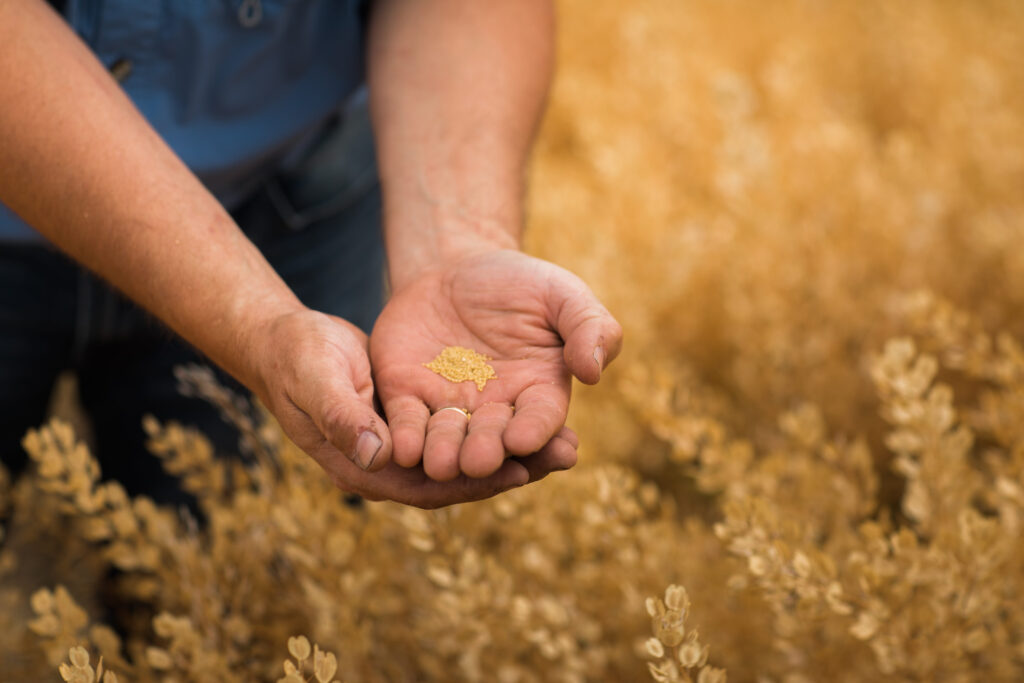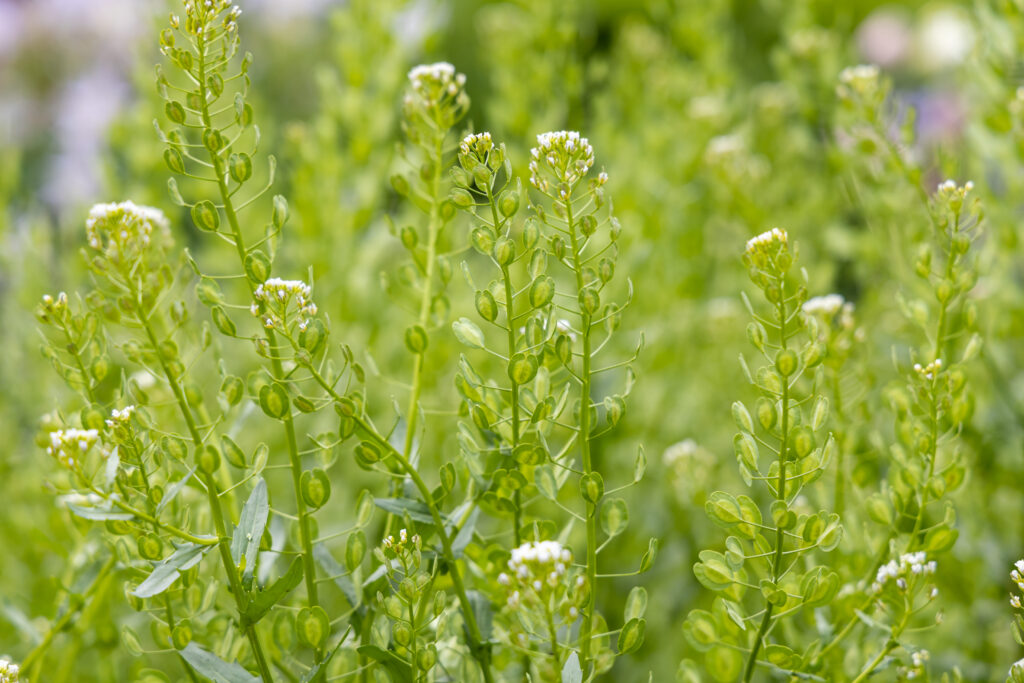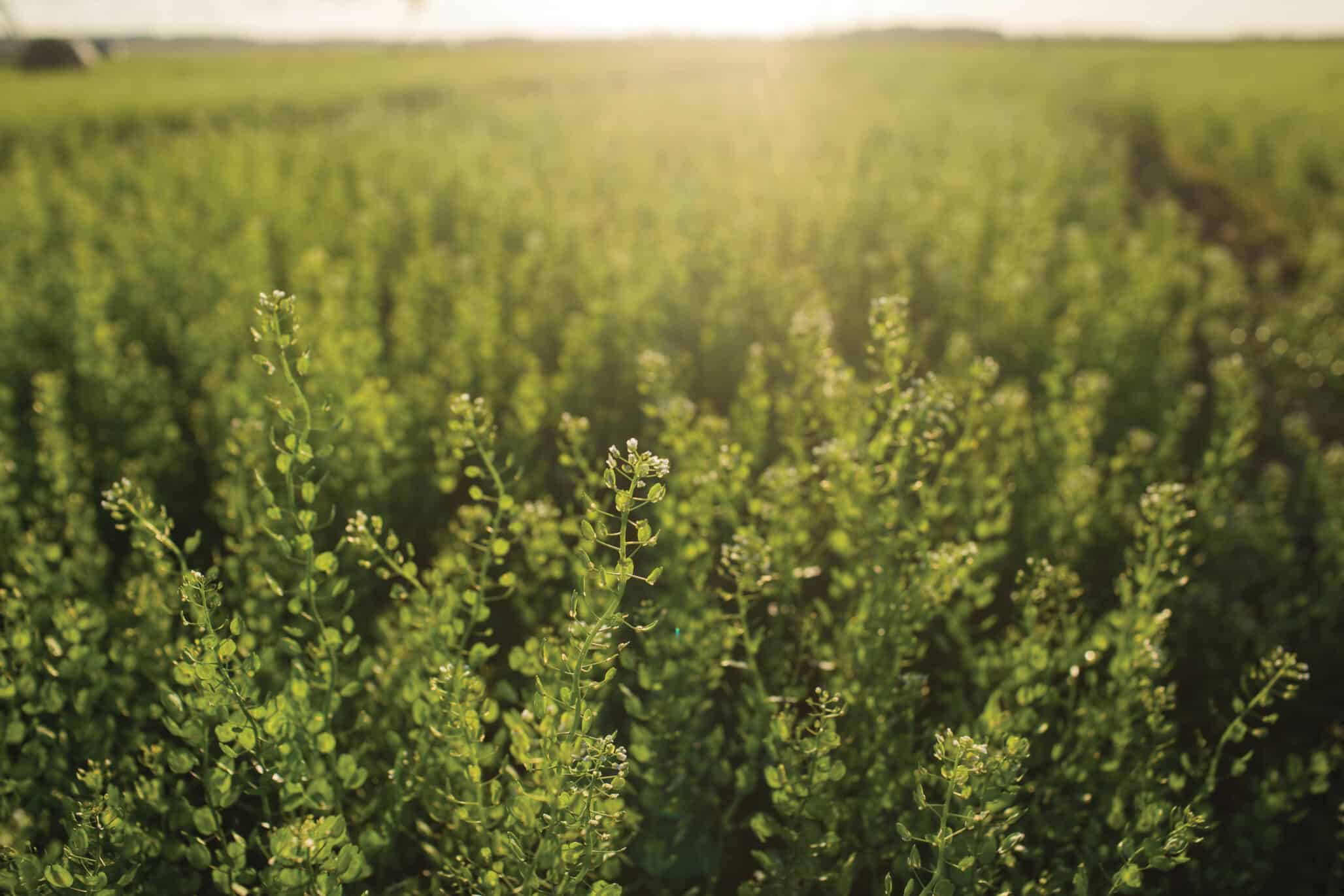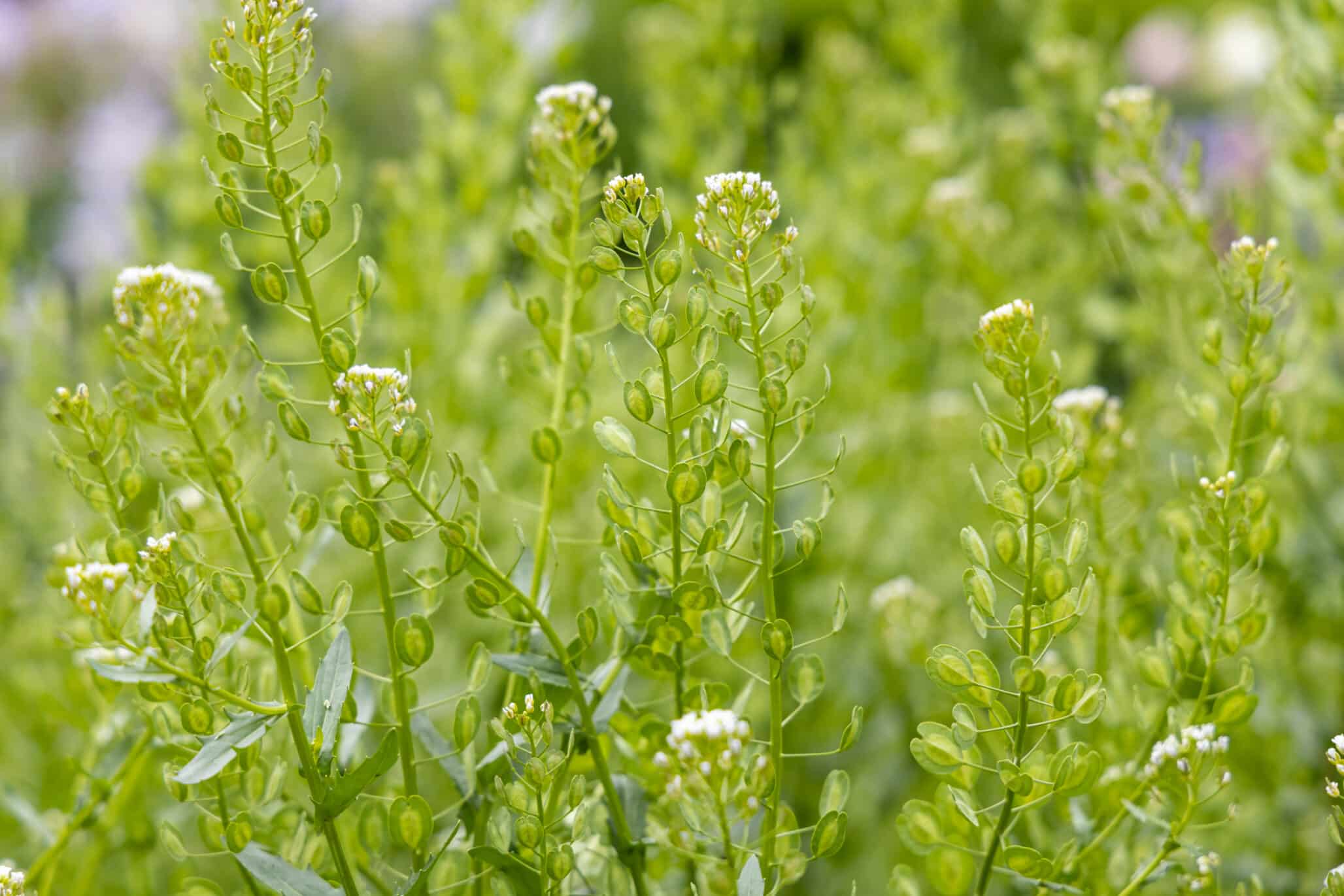The rapid rise of biofuel powerhouse pennycress.
The speed at which Pennycress has moved from weed to commercial crop is unprecedented — perhaps the fastest completion of this process in history.
The story begins in the early 2000s, when the U.S. Department of Agriculture (USDA) began hunting for oilseed crops for biodiesel production. Production of soybean oil for biodiesel raised food versus fuel concerns, but several plants, including field pennycress (Thlaspi arvense L.), caught USDA researchers’ attention. Seed oil content of pennycress was high, about 30%. But putting that fantastic finding aside, there was great excitement about the weed for other reasons.
Like canola, camelina and carinata, they believed pennycress could be developed into a true rotational winter cash crop, particularly for U.S. farmers in the Corn Belt. That is, with a harvest of mid-to-late May, it would have minimal impact on planting a main growing season crop like soybeans, depending on the location and spring conditions. It could provide new revenue for farmers and important cover crop benefits to boot.
There was also no reason to doubt that genetically — similarly to what had been achieved with canola — reductions in grain fiber along with lower erucic acid and glucosinolate levels in the oil could be achieved in pennycress, making the meal from crushing plants an excellent ingredient for livestock feed.
From there, it was full steam ahead — and the timing could not have been better in terms of the new and powerful genetic tools.
“By 2014, CRISPR was ready,” explains John Sedbrook of Illinois State University, one of the many scientists who has worked on pennycress. “Use of that tool has been crucial, along with rapid screening of large mutant populations using modern genomic analysis, and the excellence of all the people involved. The speed at which pennycress has gone from weed to crop is really different.”
Pioneering Work
Let’s back up to 2008 for a moment, when USDA chemist Terry Isbell and experienced Western Illinois agronomy breeder Winthrop Phippen began to examine pennycress.
“Building on their work, our breeding team, led by Dr. Mark Messmer, found positive results in the properties of the progeny bred from the 800+ wild type accessions collected by our company, creating a base set of germplasm with commercial promise,” says Mike DeCamp, CEO of CoverCress Inc. (formerly known as Arvegenix), a company that is now commercializing the plant as domesticated pennycress under the brand name CoverCress.
Meanwhile, University of Minnesota researchers David Marks, Kevin Dorn and Ratan Chopra at worked on mapping the pennycress genome and identifying mutants with improved traits.
“Our approach has been to use EMS-based chemical mutagenesis to create variation,” Marks says. “From this source, we identified key gene mutations that would have not necessarily been on the radar for gene editing.”
At the same time, Ph.D. candidates Michaela McGinn, Mali Esfahanian and Brice Jarvis in Sedbrook’s lab and Tim Ulmasov at CoverCress Inc. used induced mutation, natural variation and gene edits to further move pennycress from weed to crop. (McGinn and Chopra later joined CoverCress Inc.)
Two of the three main edits — reduced fiber through a seed coat color change and reduced levels of a glucosinolate called sinigrin in the seed — are jointly owned by CoverCress Inc., the University of Minnesota and Illinois State. The edit that reduces erucic acid is jointly owned by Illinois State and University of Minnesota, and licenced to CoverCress Inc.
One Gene, Much Change
Of all the important gene edits to pennycress as it’s moved from weed to crop, one stands apart. The change in seed coat color from black to gold was not only critical for reducing fiber, but also instrumental in ensuring CoverCress would become a true winter rotational crop.
“The crop has to establish well in the fall, grow well, flower early and be ready to harvest by about the end of May,” Phippen explains. “The gold seed coat is much thinner, so those seeds germinate a lot faster, which gets the stand established faster, and so on. A thinner seed coat also means stray seeds rot fairly fast after harvest instead of persisting for years like the black seed-coated varieties do, like most weed seed does.”
But for a good yield of this crop, winter hardiness — the ability to withstand repeated freeze-thaw cycles — was also critical to achieve, as was breeding for a thicker stem to prevent lodging. Phippen says he and the others have achieved great progress with those aspects and more.
“We now have all the key agronomic and end-use traits (e.g. early maturity, reduced pod shatter, reduced seed glucosinolate and improved fatty acid composition) stacked together,” Marks says.
These university and commercial scientists are not yet finished with pennycress. They will continue genetic improvement and especially develop traits for various growing environments. Sedbrook for example, is leading a multi-institutional Department of Energy project called Integrated Pennycress Resilience Project (IPREP) to understand pennycress traits related to drought, heat, cold and water-logging tolerance. He notes that there’s a lot of natural variation in temperature tolerance and other traits in the 800 accessions collected by citizen scientists from around the world for the IPREP project, which extends through 2025.

The Past Five Years
In addition to the patents for the gene edits, in 2019 there was another formalization of the collaborative efforts that has been critical for commercializing the crop. That year, a public-private partnership agreement was made among the USDA, the universities of Minnesota, Illinois State and Western Illinois and CoverCress Inc.
Over the past five years, Phippen managed the partnership under a USDA-NIFA project to commercialize pennycress named the Integrated Pennycress Research Enabling Farm and Energy Resilience (IPREFER). He coordinated funding among all involved.
While CoverCress Inc. does not have plans to license CoverCress, non-edited pennycress germplasm held at the involved universities is readily available to other entities, Phippen says.
Building a Path Forward
By August 2022, Bayer, Bunge and Chevron owned CoverCress Inc. The first pre-commercial CoverCress crop was planted in late 2023 across 3,000 acres on 24 farms in Illinois, Missouri and Indiana. In early 2024, CoverCress Inc. received a Bloomberg New Energy Fuel Pioneers award.
“The grain harvested this May will be delivered to our first customer,” DeCamp says, “to be included at a low inclusion rate in whole grain form in broiler chicken feed as the energy source for that feed. Future harvests will be crushed at the Bunge-Chevron Ag Renewables plant in Destrehan, Louisiana, which is now being modified for novel winter oilseed crops such as CoverCress and winter canola. The oil will be taken to a relatively close renewable diesel refinery, and the meal is ideal for animal feed, with a nutritional profile similar to canola meal.”
Researchers say outreach is necessary to scale CoverCress production (with all production through contracted growers), but by the end of the year, Phippen hopes knowledge of the variety will be widespread.
“Covid really clobbered our outreach over the last three years,” Phippen says, “but we’re having a (spring) field day in Macomb, Illinois that we hope will be very well-attended. I think the benefits of pennycress are obvious to farmers.”
He says farmers don’t have to buy any new equipment to harvest pennycress, they will just make a few simple modifications.
“The grain is much smaller than corn and soybean,” Phippen explains. “So farmers need to slow down the harvest speed, turn down the combine fan speed a little, put mesh into the bottom of bins so that the grain won’t fall through.”
While he also notes that it’s a lot of work to go from weed to crop, Phippen sees the journey of transforming pennycress to CoverCress truly historic. And the number of those on the journey is getting bigger all the time.
“There are several people now looking at root architecture, for example,” Phippen reports. “Pennycress has a small tap root and is therefore able to scavenge nitrogen a little deeper down, which is a great bonus benefit as a cover crop.”
Looking back, he says “it’s very exciting to be part of developing a new crop for the Midwest United States. The last time that happened with soybeans 75 years ago. There’s been nothing since. It’s an incredible experience because everything is new.”













